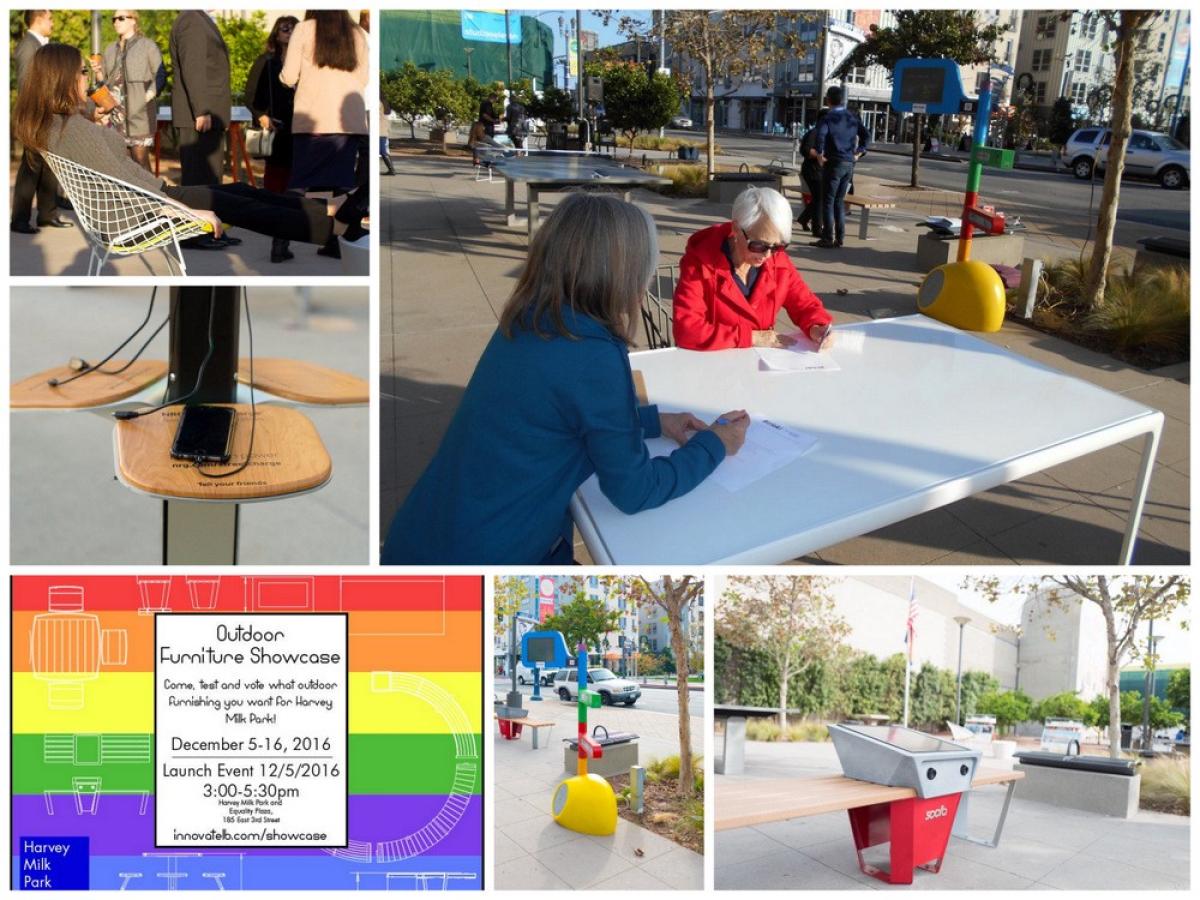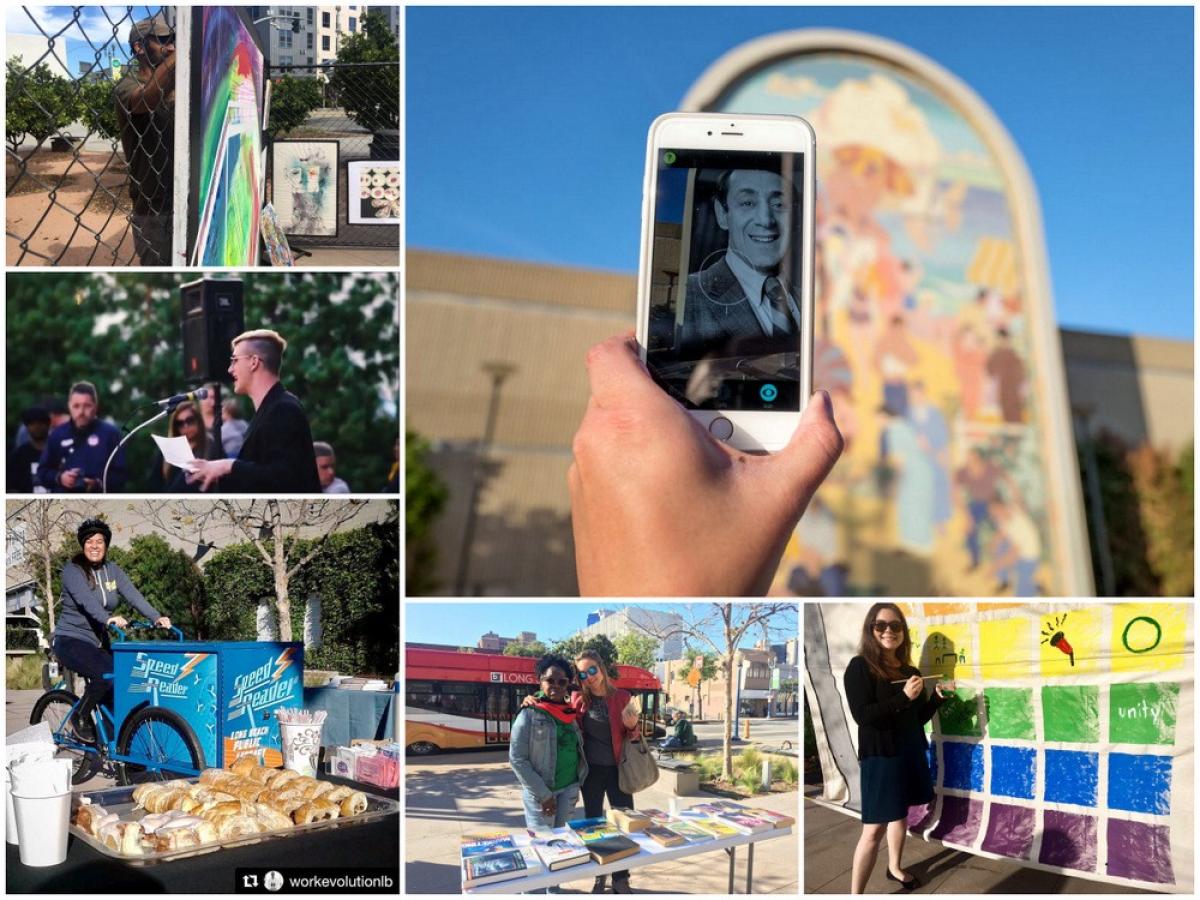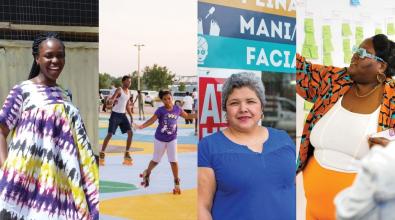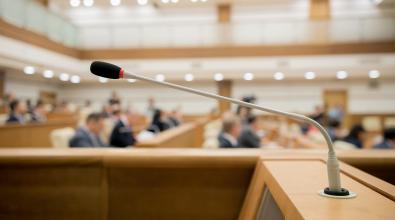How Long Beach prototyped a park
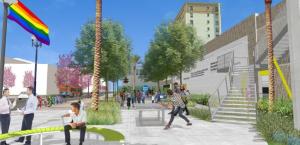
Designs for the renewal of Harvey Milk Park in Long Beach were co-created with citizens.
When the newly updated Harvey Milk Promenade Park and Equality Plaza officially reopens this summer in downtown Long Beach, Calif., it will be much more than a public space honoring an icon of the gay-rights movement. It also will be an example of civic innovation in action.
That’s because everything about the rejuvenated park — from the memorial wall honoring local LGBT leaders to the placement of pingpong tables — was co-designed with the public. In addition, the city used an innovative procurement process to purchase the park’s outdoor furniture, one that allowed residents to try out tables, chairs, and mobile-device charging stations before the city invested taxpayer money.
The changes flowed from a process led by the Long Beach innovation team, an in-house consultancy tasked with finding creative new ways to solve problems in local government. The Long Beach group is one of more than 20 “i-teams” funded by Bloomberg Philanthropies in the United States, France, and Israel.
[Read our explainer: What is prototyping?]
The i-team first zeroed in on Harvey Milk Park, an underutilized two-tenths of an acre in downtown Long Beach, as part of a year-long effort to infuse new thinking into the city’s economic development efforts. The initial concept was to capitalize on the movement toward teleworking, as well as the sunny southern California weather, to create a free “outdoor co-working space” for local entrepreneurs.
But that plan evolved after it was prototyped with citizens. “The outdoor office concept did not ring well with our community stakeholders,” said Alma Castro, who managed the project for the i-team. “It gave them the impression that there would be cubicles.
“What did resonate is we’d have free WiFi, and that the pingpong table could also be used to have meetings or a shared meal. All the components for working were there, but actually labeling it as an ‘outdoor co-working space’ did not resonate.”
More than a year before construction started, the city held a series of “activation” events in the park intended to test its assumptions about what kinds of programming and amenities would most interest residents. One event included “coffee and conversation.” Another encouraged people to eat lunch in the park. There was a pingpong battle, a show featuring local artists, and a transgender-awareness event.
A pair of cultural anthropologists and interns from the Planning Department were on hand at each event to interview park users and observe their experiences. “Cultural anthropologists help us get the ethnography piece and understand people’s behaviors,” Castro explained. “We rely heavily on both quantitative and qualitative data.”
Castro also arranged to have eight vendors showcase different models of outdoor furniture over a two-week period. This gave residents the chance to kick back in the park chairs, grab a table for a lunch meeting, and try out different methods of charging up their phones before voting for their favorite options via text message. “This got the public involved with the procurement process,” Castro said.
Trying out the furniture before buying it may sound like common sense. But it required nothing short of a procurement revolution. Typically when governments buy things, they need to know what they want first, and then seek bids. In this case, Long Beach put out its first ever “request for solutions.” Essentially, it was an invitation for vendors to come to Harvey Milk Park and show off their products with no commitment from the city to buy anything. To broker the deal, Long Beach turned to Citymart, a platform that helps cities run procurement “challenges” meant to turn up solutions they might not think of on their own.
The team also prototyped an augmented-reality approach to engaging visitors in the story of the park’s namesake. One of the first openly gay elected officials in the United States, Harvey Milk was elected to the San Francisco Board of Supervisors in 1978 and assassinated only a year later. A local vendor experimented with a feature that let visitors use their mobile phones to, among other things, hear one of Milk’s speeches. An updated version of the feature will be part of the park’s grand opening.
All of this testing, learning, and adapting not only helped Long Beach make smarter decisions about how to design the park and what to buy for it. It’s also helped local leaders hone the park’s new brand — and what the space is meant to be for residents. Working outside is part of the concept, but it’s also about building on the idea of a park as a hub for people to connect and be inspired to make their city a better place.
“This is a park where people go to work and do something about things they want to change,” Castro said. “It was important to see that you can go in with an idea, but when you actually start prototyping and see what works and what sticks, it changes into something more authentic.”
